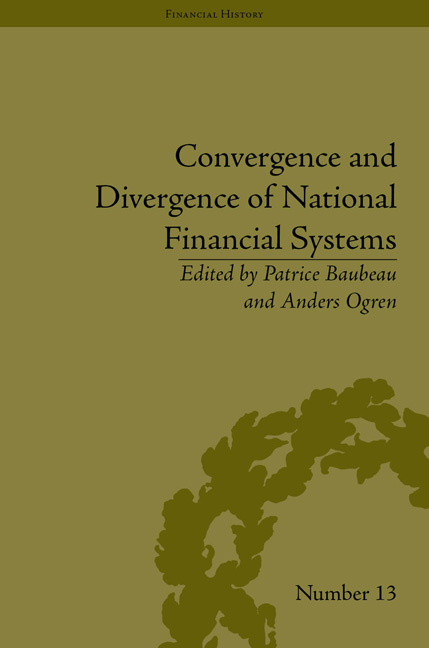 Convergence and Divergence of National Financial Systems
Convergence and Divergence of National Financial Systems from Part II - National Convergences and Divergences in the Long Term
Introduction
Switzerland participated in the varying gold standards in the period 1871–1971. Switzerland backed its currency to gold and committed itself to fixed gold exchange rates from 1878–1914 and from the end of 1924 until 1936. After the Second World War Switzerland returned to gold convertibility until 1973. In order to understand the implications of the gold standard regimes for the divergence and convergence of international financial systems it is important to investigate the outcome for the banking industry. Using a new data set on Swiss banking it becomes possible to study banks’ balance sheets over a long time period from 1906 until 1971.
During these times Switzerland had to cope with three banking crises, the first being a consolidation of the banking industry in the years 1911–14 and the second one a result of the First World War in the years 1920–1. Last, a very severe banking crisis occurred in the wake of the Great Depression in the years 1931–5.
In this chapter, the three Swiss banking crises in the period 1906–71 will be analysed with respect to gold standard membership. The gold standard regimes might have helped European financial systems to converge and to prosper growth due to the reductions in exchange rate fluctuations during normal times. At the same time increased international interdependencies might have made the Swiss financial industry more vulnerable to foreign shocks in times of crises.
An indicator measuring the output gap between the potential return on equity and actually achieved return on equity is proposed, instead of using the traditional measures such as return on equity, Tier I ratio or cost–income ratio. By including the profit and loss accounts as well as balance-sheet data in the investigation, it becomes possible to reduce a comprehensive data set to one single measure. If a banking group strongly deviates from its potential output it is considered to be under distress.
To save this book to your Kindle, first ensure [email protected] is added to your Approved Personal Document E-mail List under your Personal Document Settings on the Manage Your Content and Devices page of your Amazon account. Then enter the ‘name’ part of your Kindle email address below. Find out more about saving to your Kindle.
Note you can select to save to either the @free.kindle.com or @kindle.com variations. ‘@free.kindle.com’ emails are free but can only be saved to your device when it is connected to wi-fi. ‘@kindle.com’ emails can be delivered even when you are not connected to wi-fi, but note that service fees apply.
Find out more about the Kindle Personal Document Service.
To save content items to your account, please confirm that you agree to abide by our usage policies. If this is the first time you use this feature, you will be asked to authorise Cambridge Core to connect with your account. Find out more about saving content to Dropbox.
To save content items to your account, please confirm that you agree to abide by our usage policies. If this is the first time you use this feature, you will be asked to authorise Cambridge Core to connect with your account. Find out more about saving content to Google Drive.